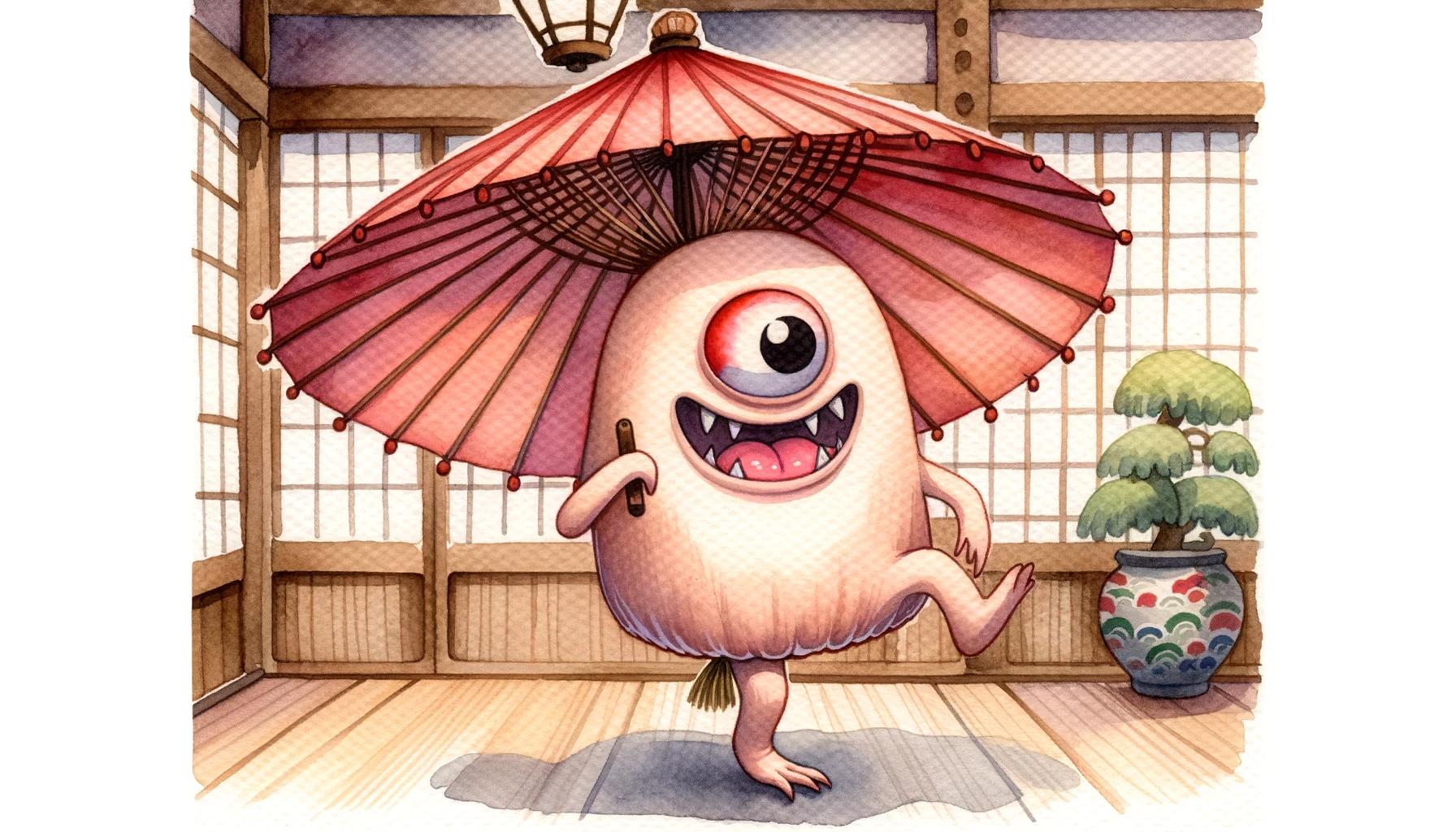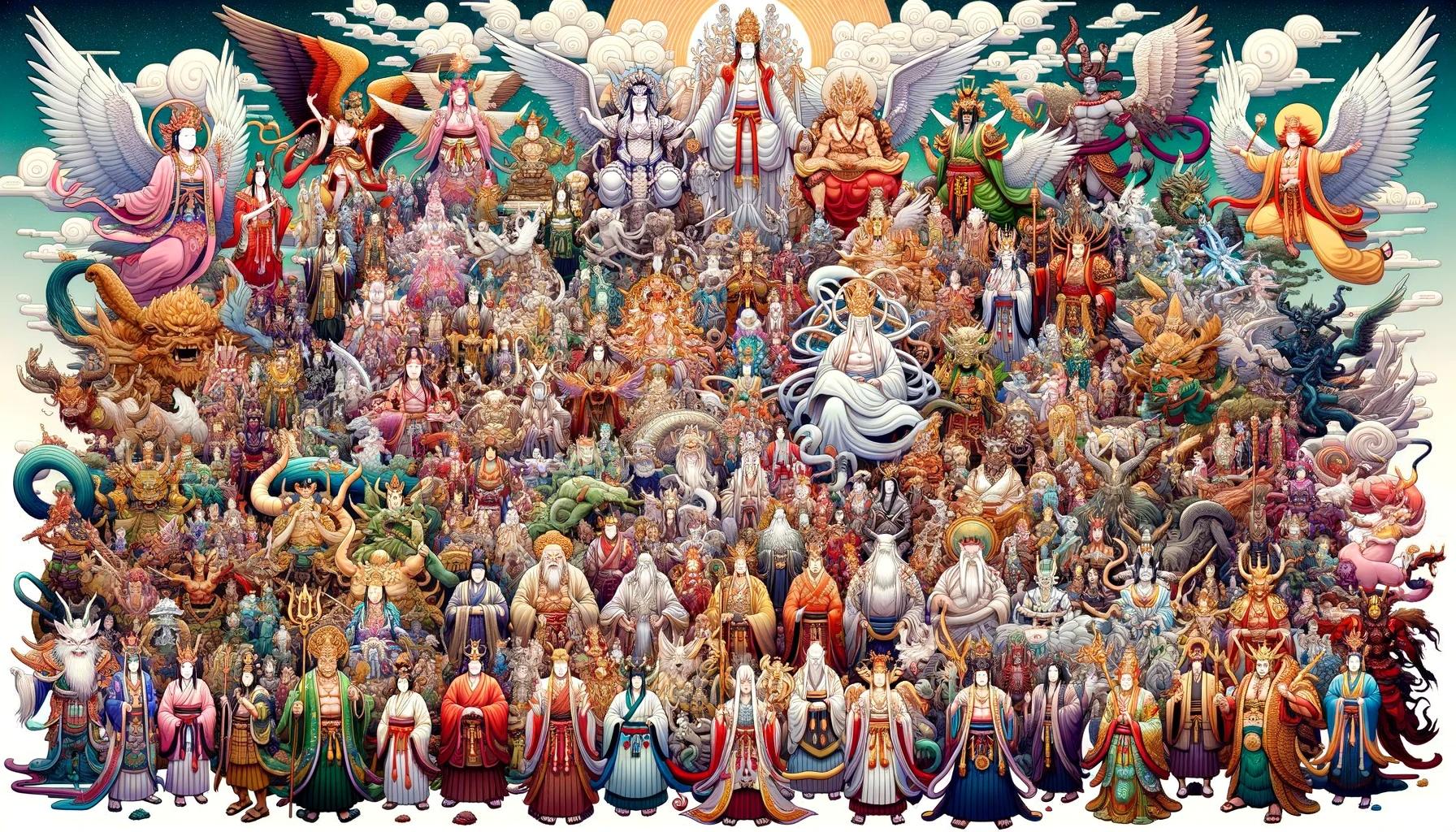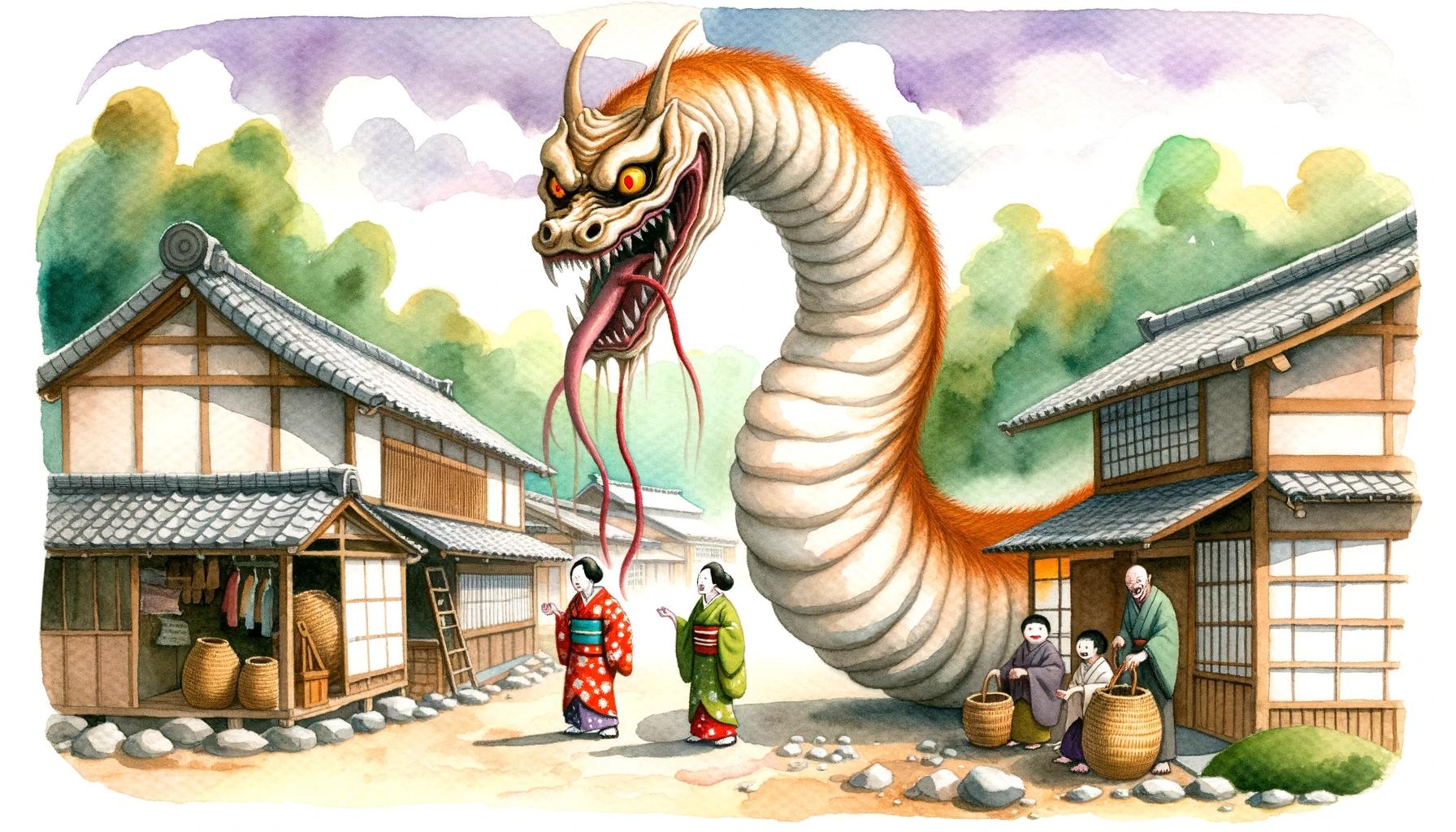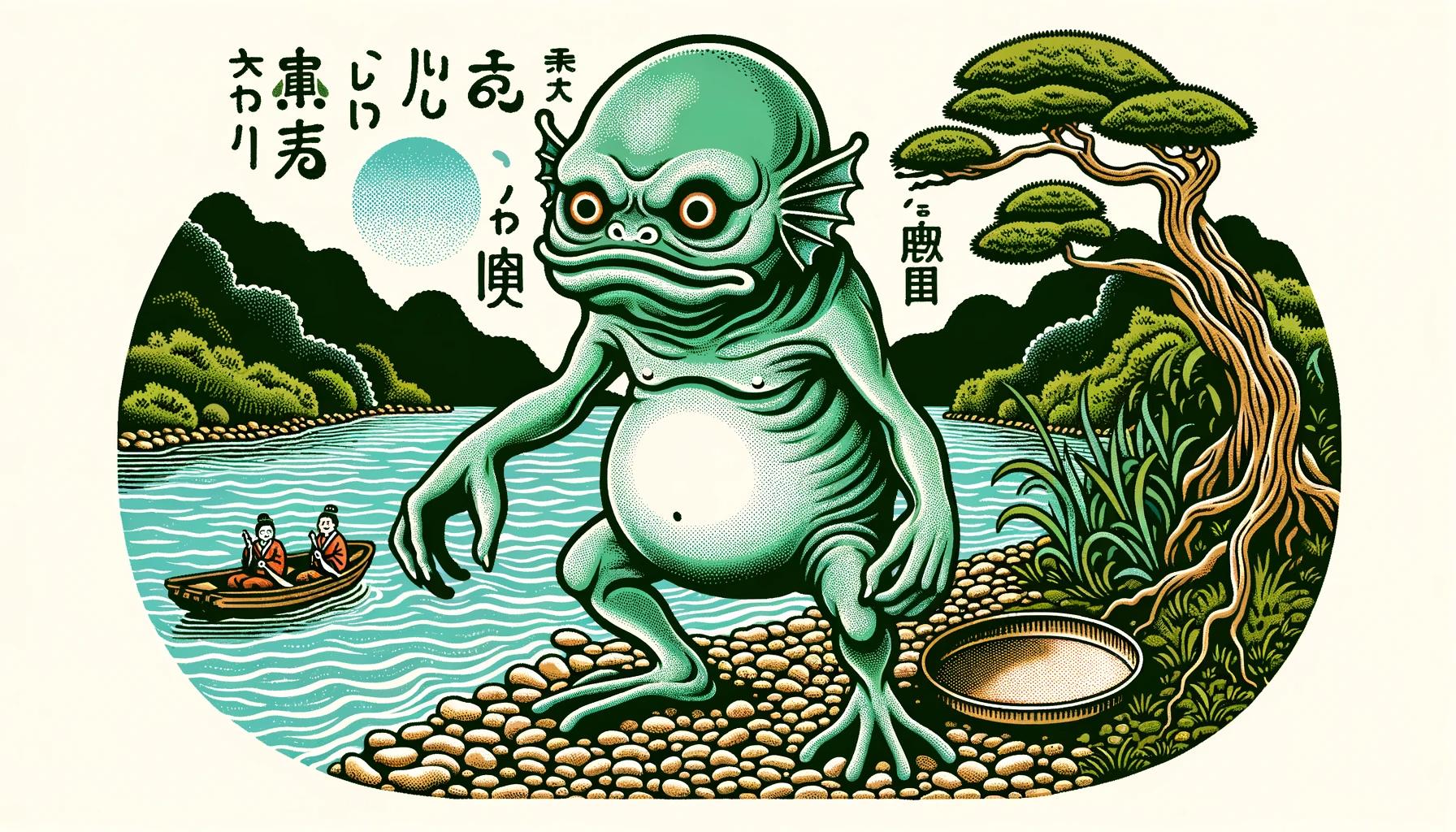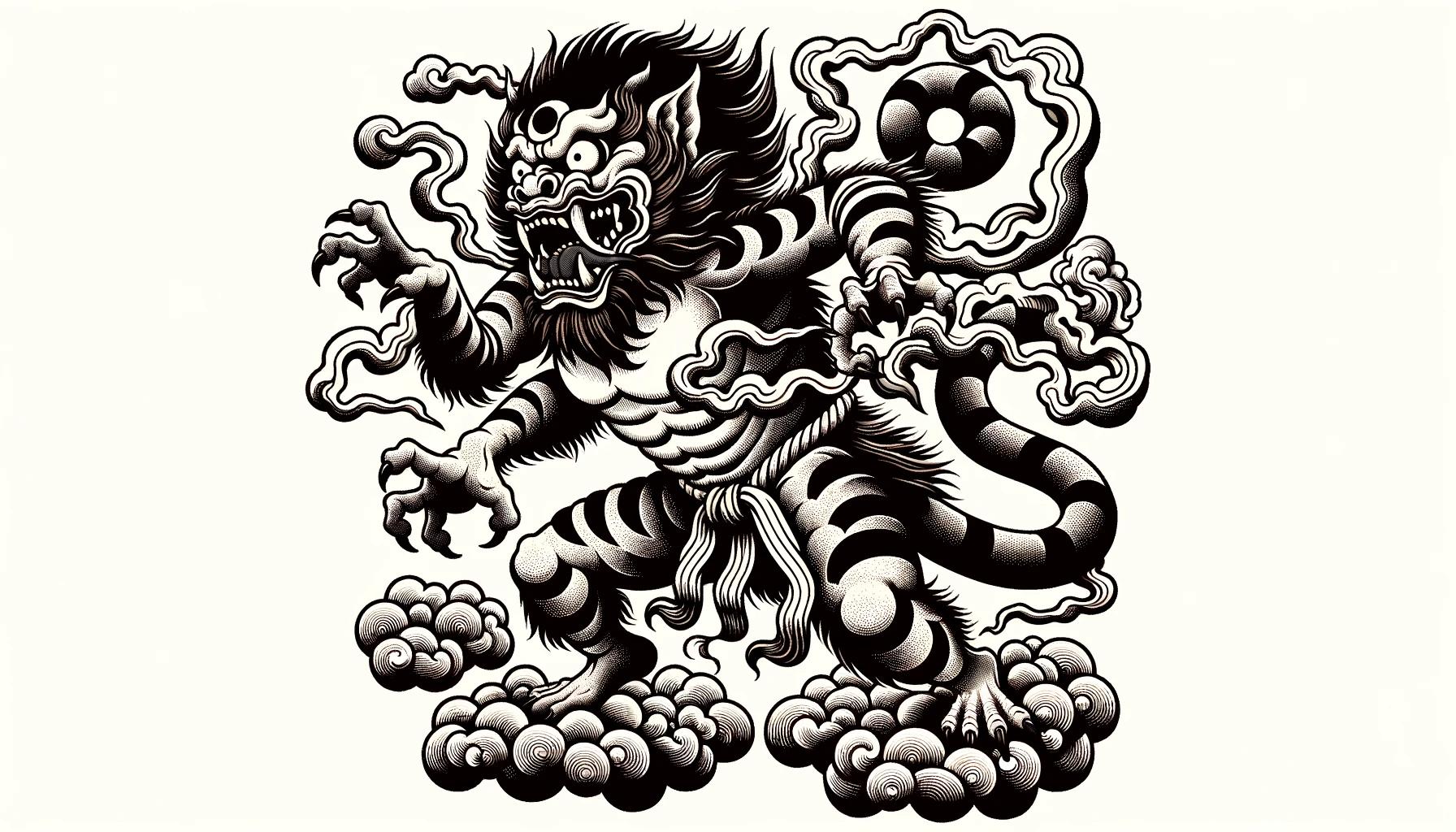Japanese Myth Of Creation
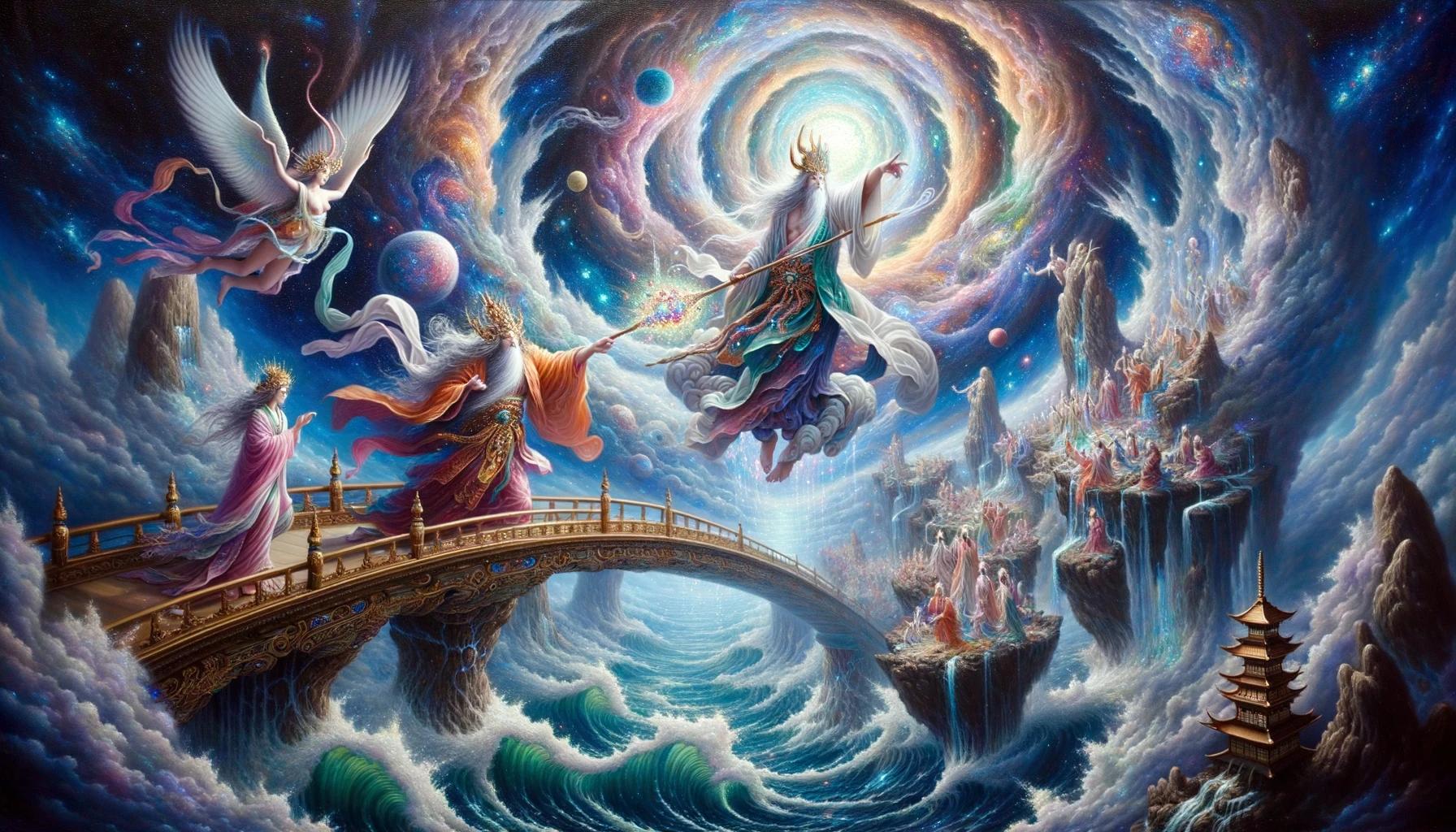
In Japanese mythology, the story of creation revolves around the gods Izanagi and Izanami. They explored the ocean and created the islands of Japan. They married and had children, including the radiant Amaterasu, who became the sun, and Tsuki-yami, who became the moon.
Sosano-wo was a rebellious child who created storms in the sea. Amaterasu’s descendants eventually became the emperors of Japan. The creation myth involves the emergence of deities, the formation of Japan, and the celestial beings shaping the universe.
The Origins of the Universe and the Japanese Creation Myth
The Japanese creation myth delves into the fascinating origins of the universe, exploring the beliefs and legends surrounding its creation. It provides an intriguing perspective on the emergence of particles, light, and the deities responsible for shaping the world as we know it.
This mythological narrative unfolds through various stages, revealing the Chaos and the subsequent formation of the celestial entities.
The Chaos and the Emergence of Particles and Light
The Japanese creation myth begins with the concept of Chaos, where silence prevailed before the universe’s existence. Within this chaos, particles and light gradually came into being. The movement of these particles and the luminosity of light initiated the process of creation.
As particles floated within the chaos, the lighter ones formed ethereal clouds in the sky, while the heavier ones coalesced to become the Earth, laying the foundation for the forthcoming world.
The Deities of Creation: Kotoamatsukami and Zouka-sanshin
As the universe took shape, five deities appeared, known as the Kotoamatsukami. Among them, three notable deities emerged before the others, comprising the Zouka-sanshin, or the Three Gods of Creation.
These deities manifested without a male-female pairing, symbolizing their role as the primal creators of the universe. They hold a significant place as the initial divine beings responsible for the subsequent stages of creation.
The Kamiyo-nanayo: The Era of the Gods
Following the emergence of the Kotoamatsukami, a period known as the Kamiyo-nanayo, or the Era of the Gods, unfolded. During this era, more deities came into existence, including the revered Izanagi and Izanami. These two deities played pivotal roles in shaping the realm and were entrusted with the task of creating a new land.
Together, they embarked on a journey that led them to the Floating Bridge of Heaven, which connected to the Earth that was still a floating mass of water. Utilizing a jeweled spear, they stirred the Earth, and the water that dripped from it formed the first Japanese island, Onogoro-shima.
Izanagi and Izanami settled on this newly formed island, where they built a castle and eventually married. Their union marked a significant step in the creation of Japan and laid the groundwork for further divine and human existence.
The myth of creation continues, delving into the captivating narratives surrounding the birth of Amaterasu, the sun goddess, Tsuki-yami, the moon deity, and Sosano-wo, the rebellious sea god.
Izanagi and Izanami: The Creators of Japan
Descending to the Floating Bridge of Heaven
Izanagi and Izanami embarked on their mission to create a new country by descending to the Floating Bridge of Heaven, which connected to the Earth that was still a mass of floating water.
This mythical bridge provided a pathway for the gods to reach the land.
Creating the First Island: Onogoro-shima
Using a jewel spear, Izanagi and Izanami began their creative task by removing the Earth and water that dripped from the tip of the spear. This resulted in the formation of the first island called Onogoro-shima.
It became the sacred ground where their journey of creation unfolded.
The Marriage of Izanagi and Izanami
After the creation of Onogoro-shima, Izanagi and Izanami built a castle and decided to marry. Their divine union signified the harmony required to bring life into the newly formed land.
Their marriage marked the beginning of a collaboration that would shape the world as we know it today.
The Birth of Amaterasu and the Sun Goddess
The story of the birth of Amaterasu, the radiant sun goddess, is a fascinating part of Japanese mythology. She was the first daughter of Izanami and Izanagi, the divine creators of Japan.
Amaterasu was not just an ordinary child; she possessed a beauty so radiant that the gods deemed her too precious for the land of Japan.
The Radiant Beauty of the First Daughter
Amaterasu’s beauty was renowned among the gods.
Her radiant presence and celestial aura captivated everyone who beheld her. The gods realized that such a marvel deserved a higher place, far beyond the earthly realm. Thus, they made the extraordinary decision to elevate Amaterasu to the sky, where she would become the divine sun.
Amaterasu’s Ascension to the Sky
As Amaterasu ascended to the sky, she transformed into the sun, lighting up the heavens with her brilliance. From that moment onward, she became the embodiment of light and warmth, illuminating the world every day.
Amaterasu’s radiant rays became a symbol of life, driving away darkness and nurturing the earth with her gentle touch.
The ascension of Amaterasu as the sun goddess marked a significant event in Japanese mythology.
Her divine presence and illuminating power have had a profound influence on the culture and spiritual beliefs of the Japanese people throughout history.
Tsuki-yami: The Moon Deity
In Japanese mythology, Tsuki-yami is recognized as the deity of the moon. As the sibling of Amaterasu, the sun goddess, Tsuki-yami played a crucial role in shaping the natural world and cosmic balance.
In contrast to the radiant and nurturing presence of Amaterasu, Tsuki-yami represents the enigmatic and alluring essence of the moon.
Traditionally depicted as a mysterious figure with ever-changing phases, Tsuki-yami’s influence extends beyond the celestial realm.
The moon deity holds sway over various aspects of life, including the tides, emotions, and cycles of nature. Just as the moon affects the ebb and flow of the ocean, Tsuki-yami’s energy affects the emotional tides within human beings.
Stories in Japanese mythology often portray Tsuki-yami as a conflicted character. The moon deity embodies both darkness and light, symbolizing the duality of existence. While Tsuki-yami brings a sense of tranquility and serenity during moonlit nights, its dark side is associated with shadows, mysteries, and the unknown.
This dual nature reflects the delicate balance between order and chaos in the universe.
According to mythological accounts, Tsuki-yami’s creation was a consequence of Izanagi and Izanami’s journey to explore the world.
When Izanami ventured into the underworld, Tsuki-yami was born from her left eye. This marked the separation of light and darkness, as Amaterasu emerged from Izanagi’s right eye.
These two siblings symbolize the intricate relationship between day and night, representing the natural cycles that govern existence.
Apart from its celestial significance, Tsuki-yami also plays a role in various folktales and legends.
These stories explore the moon deity’s interactions with other divine beings, celestial events, and its influence on human lives. The moon’s ever-changing appearance serves as a reminder of the impermanent nature of life, prompting reflection on the cyclical patterns of creation and renewal.
In modern Japanese culture, Tsuki-yami is often celebrated through lunar festivals and artistic expressions. From traditional artworks depicting moonlit scenes to contemporary literary works and films inspired by the moon’s captivating allure, the moon deity remains a prominent figure in Japanese folklore and artistic representations.
Sosano-wo: The Rebellious Sea God
In Japanese mythology, Sosano-wo is depicted as the rebellious sea god, known for his unpredictable nature and his ability to create destructive storms. Born as the third son of Izanagi and Izanami, Sosano-wo’s unruly behavior led to his banishment to the sea.
As the tumultuous waves crashed against the shores of Japan, Sosano-wo unleashed his fury, causing havoc with his tempestuous winds and raging storms. He reveled in the chaos and destruction he brought upon the land, often tormenting the inhabitants of the coastal regions.
Legend has it that Sosano-wo once threw a divine tantrum, slaying Izanami’s cherished garden and defiling her sacred space. In response, Izanagi decided to exile Sosano-wo to the realm of the sea, hoping to contain his disruptive influence.
Despite his rebellious nature, Sosano-wo’s actions played a significant role in shaping the natural landscape of Japan. The storms he created contributed to the formation of rivers, valleys, and mountains, leaving an indelible mark on the land.
It is important to note that while Sosano-wo’s actions were often destructive, he also had a transformative aspect. In some legends, he is credited with introducing agriculture to Japan, teaching humans the art of farming and cultivating the land.
Sosano-wo’s turbulent relationship with his siblings and his defiance of his parents’ authority make him a fascinating figure in Japanese mythology. His rebellious and unpredictable nature serves as a reminder of the complexities and dualities found within the pantheon of gods.
The Descendants of Amaterasu and the Emperors of Japan
The lineage of Amaterasu, the radiant sun goddess and daughter of Izanagi and Izanami, played a pivotal role in shaping the history of Japan. Her first son, Oshihomimi, went on to father Ninigi, who is believed to be the ancestor of the Japanese Imperial Family.
This lineage established a connection between the divine and earthly realms, as the emperors of Japan claimed descent from Ninigi.
Emperor Jimmu, considered the first emperor of Japan, traced his ancestry back to Ninigi and became the founder of the imperial line in 660 BCE.
According to the Japanese mythology, he embarked on a legendary journey to establish his rule over the land, overcoming various challenges and obstacles along the way.
Subsequent emperors followed in the footsteps of Emperor Jimmu, perpetuating the divine lineage and guiding the destiny of the Japanese nation.
The emperors held significant religious and symbolic roles, serving as the link between the celestial and mortal realms.
Throughout history, the imperial family has witnessed periods of prosperity, transformation, and even challenges to their authority.
They have navigated through shifting political landscapes and adapted to the changing dynamics of Japanese society while maintaining their connection to the mythical origins.
Each emperor brought their own unique contributions and leadership style to the nation, leaving their mark on Japanese history.
From political reforms to cultural advancements, their reigns shaped the identity and values of Japan as a nation.
Even in modern times, the Japanese emperor continues to hold a revered position as a symbol of unity and tradition.
Though their political role is ceremonial, they still embody the enduring legacy of the mythical origins and ancestral connection to Amaterasu.
.











